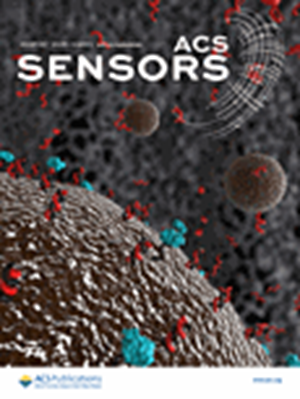Nitrogen Plasma-Driven Oxygen Vacancy Modulation in Tin Dioxide Nanosheets Enables Sub-Parts-per-Billion Nitrogen Dioxide Detection at Low Operating Temperature.
IF 8.2
1区 化学
Q1 CHEMISTRY, ANALYTICAL
引用次数: 0
Abstract
Metal oxide semiconductor (MOS) materials have been widely used in gas sensing. However, they generally face challenges such as high operating temperatures and limited sensitivity/selectivity, which hinder their applications in areas like medical diagnosis based on human exhaled breath and ultralow concentration gas detection in harsh environments. Developing general strategies to enhance the sensing performance of MOS materials is both challenging and highly desired. Herein, we demonstrate nitrogen plasma-driven oxygen vacancy modulation in tin dioxide nanosheets (SnO2 NSs) that enables sub-parts-per-billion-level nitrogen dioxide (NO2) detection at low temperatures. SnO2 NSs, oriented predominantly along the (110) crystal facet, are synthesized using graphene oxide templates and treated with nitrogen plasma, which can generate abundant oxygen vacancies. The oxygen vacancy-rich SnO2 NSs exhibit exceptional NO2 sensing performance, with a theoretical detection limit of 0.154 ppb and a response that is 3.4 times higher than that of the untreated SnO2 NSs at 80 °C. Mechanism studies reveal that the improved sensitivity is attributed to the large surface area, favorable crystal orientation, and oxygen vacancies introduced by nitrogen plasma treatment. This work not only provides a promising strategy for modulating the oxygen vacancies in MOS materials, but also offers valuable insights for the development of high-performance MOS-based gas sensors.二氧化锡纳米片中的氮等离子体驱动氧空位调制能够在低工作温度下检测到十亿分之一的二氧化氮。
金属氧化物半导体(MOS)材料在气体传感领域得到了广泛的应用。然而,它们通常面临诸如高工作温度和有限的灵敏度/选择性等挑战,这阻碍了它们在基于人类呼出气体的医疗诊断和恶劣环境下的超低浓度气体检测等领域的应用。开发一般策略来提高MOS材料的传感性能是具有挑战性的,也是非常需要的。在此,我们展示了氮等离子体驱动的二氧化锡纳米片(SnO2 NSs)中的氧空位调制,可以在低温下检测十亿分之一的二氧化氮(NO2)。利用氧化石墨烯模板和氮等离子体处理合成了主要沿(110)晶面取向的SnO2 NSs,可以产生丰富的氧空位。富氧空穴SnO2 NSs表现出优异的NO2传感性能,理论检测限为0.154 ppb,在80°C下的响应是未处理SnO2 NSs的3.4倍。机理研究表明,灵敏度的提高是由于氮等离子体处理带来的大表面积、有利的晶体取向和氧空位。这项工作不仅为调制MOS材料中的氧空位提供了一种有前途的策略,而且为高性能MOS气体传感器的开发提供了宝贵的见解。
本文章由计算机程序翻译,如有差异,请以英文原文为准。
求助全文
约1分钟内获得全文
求助全文
来源期刊

ACS Sensors
Chemical Engineering-Bioengineering
CiteScore
14.50
自引率
3.40%
发文量
372
期刊介绍:
ACS Sensors is a peer-reviewed research journal that focuses on the dissemination of new and original knowledge in the field of sensor science, particularly those that selectively sense chemical or biological species or processes. The journal covers a broad range of topics, including but not limited to biosensors, chemical sensors, gas sensors, intracellular sensors, single molecule sensors, cell chips, and microfluidic devices. It aims to publish articles that address conceptual advances in sensing technology applicable to various types of analytes or application papers that report on the use of existing sensing concepts in new ways or for new analytes.
 求助内容:
求助内容: 应助结果提醒方式:
应助结果提醒方式:


